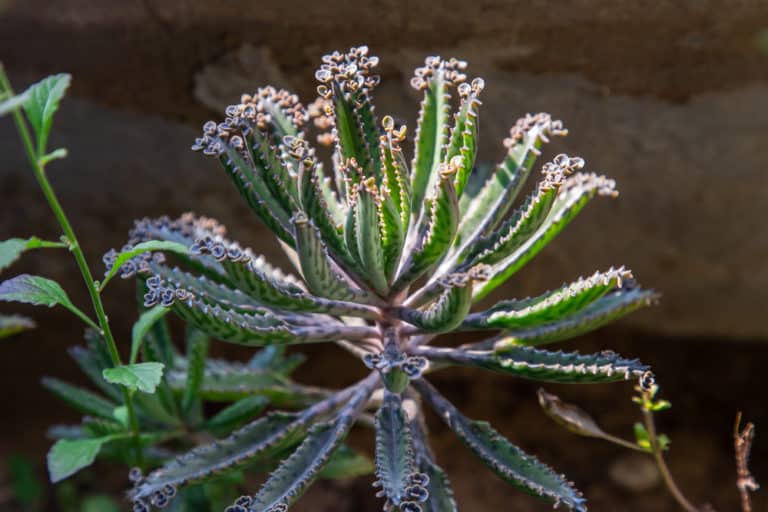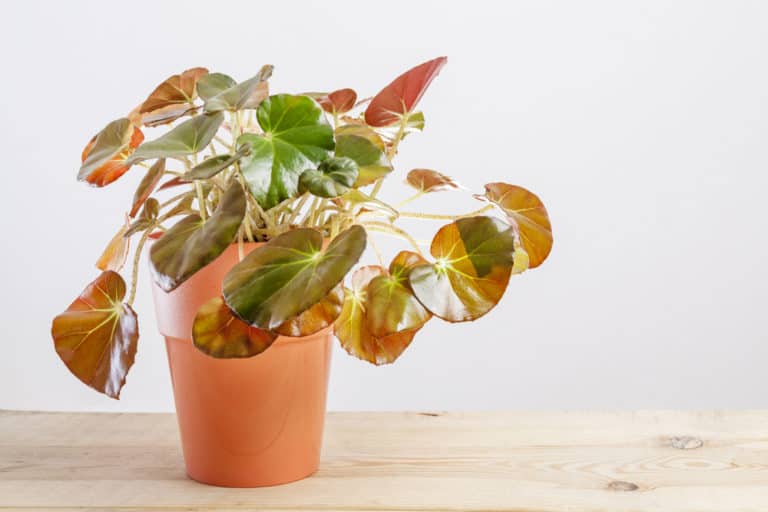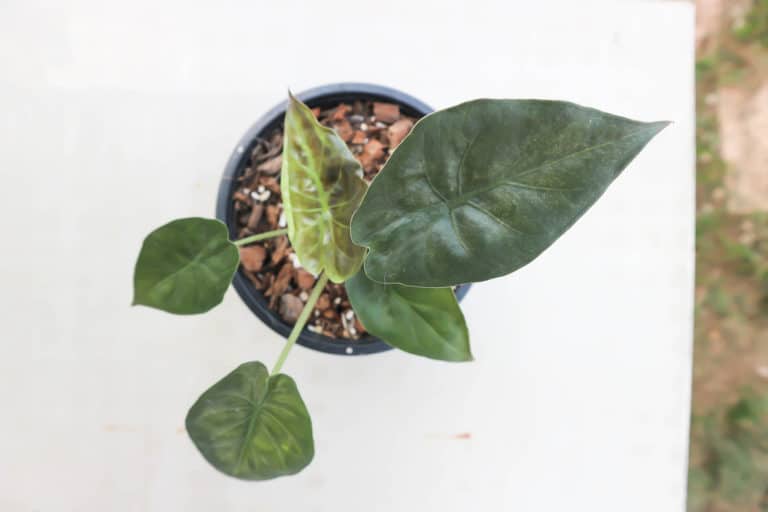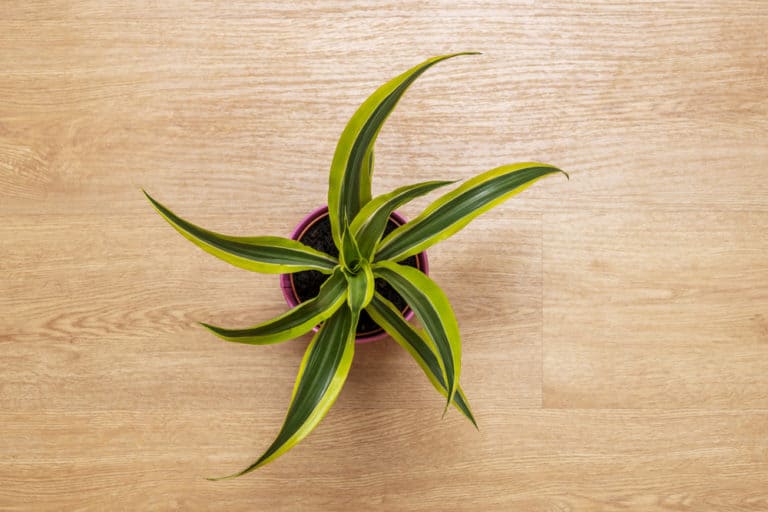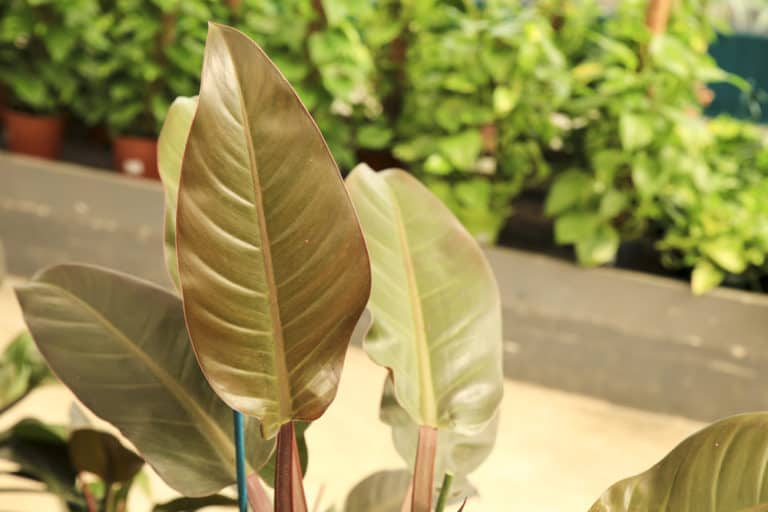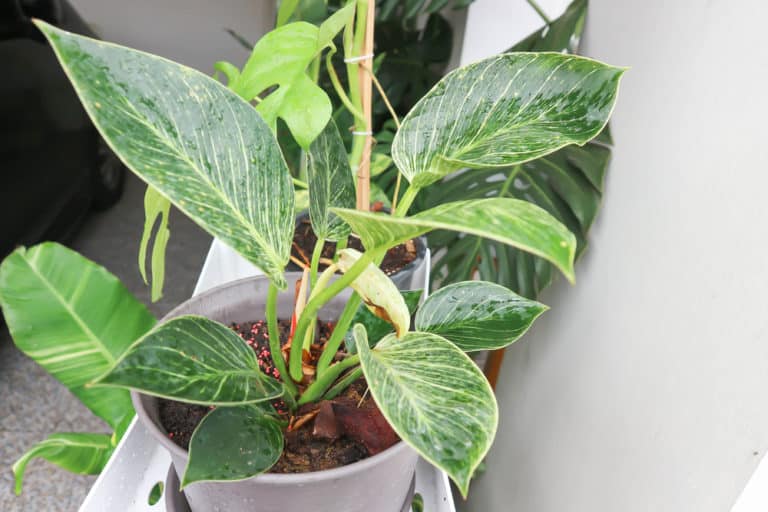Rhaphidophora Decursiva ‘Dragon’s Tail’ Care Guide (2024)
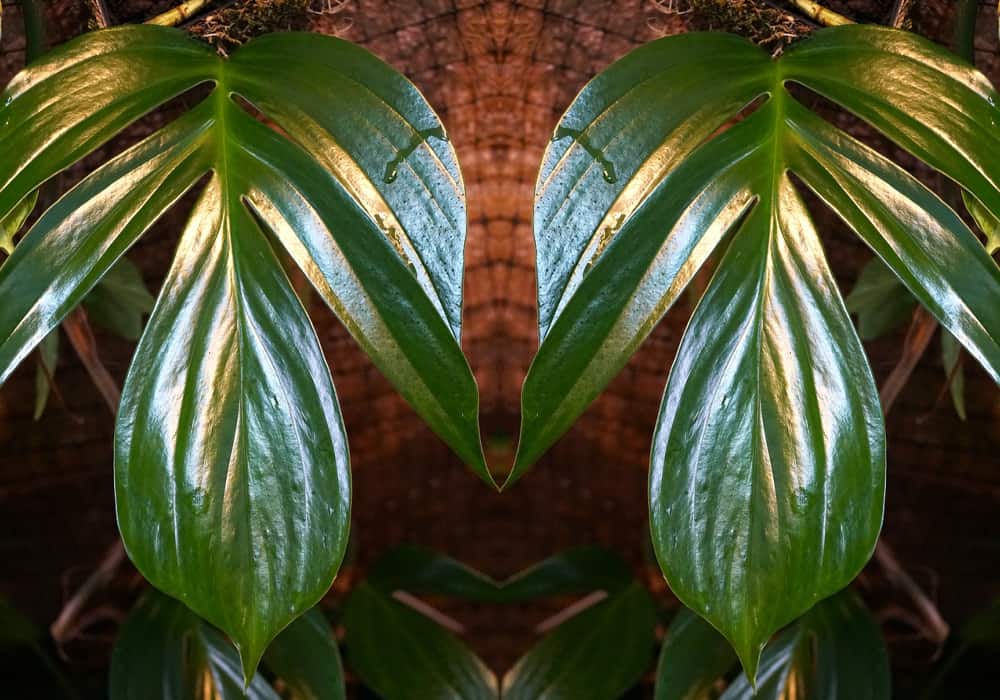
The Rhaphidophora decursiva, more commonly known as the Decursiva plant, is a rare climbing species hailing from Southeast Asia. Notable for its large green satin split leaves, Decursivas are becoming a plant shop favorite, and this is mainly attributed to their tropical persona. Whether indoor or outdoor, this evergreen plant certainly invites that fresh scenery from the orient!
| Scientific Name | Rhaphidophora decursiva |
| Common Name | Decursiva plant, Dragon’s Tail, Monstera decursiva |
| Light | Bright filtered light to partial Shade |
| Watering | Once or twice a week, water if the top half of the soil is dry |
| Temperature | 60 to 80°F or (15.6 to 26.7°C) |
| Hardiness Zone | USDA hardiness zones 10 to 12 |
| Humidity | >60% |
| Soil Type | Rich, high in OM, well-draining |
| Soil pH | Slightly acidic (5.6 to 6.5 pH) |
| Fertilizing | A balanced feed once a month in spring and summer |
| Repotting | Every 1 or 2 years |
| Pruning | Beginning of the growing season |
| Propagation | Stem cuttings, Air layering |
| Toxicity | Toxic to humans and pets |
| Mature Size | 5-8 meters as a houseplant |
| Bloom Time | Late spring, early summer |
What’s Unique About Rhaphidophora decursiva?
A well-known climbing specimen, the Rhaphidophora decursiva plant is a robust evergreen plant characterized by its luscious set of foliage. In the juvenile phase, the leaves are deeply split (fenestrated) and oval-shaped. At maturity, the leaves develop a pinnate appearance and become more glossy.
Rhaphidophora decursiva plants are native to China. Others may be found on Indian subcontinent, and may even be greatly distributed among countries like Cambodia, Vietnam, Laos, and the Philippines.
Yet other than their looks, the plants are adored due to their air cleaning ability. Hence, growing this plant offers you more than ornamental satisfaction, but as well as a cleaner and more breathable space!
Rhaphidophora decursiva Care
Curious about how you can best take care of this tropical beaut? Well, the Rhaphidophora decursiva plant care involves giving it a lot of indirect light, enough space, the use of appropriate soil mix, and just the right amount of watering.
Read on further to help you get the full grasp of Decursiva plant care!
Light
When it comes to Rhaphidophora decursiva light requirements, know that it’s not entirely different from most typical houseplants which require bright indirect light for optimum growth.
When grown in an indoor setting, Decursiva plant light needs are attained by simply placing the plant near an east-facing window, making them the receiving end to soft but adequate lighting. Outdoors, the plant should not be exposed to full sun, especially for longer periods, as this may eventually damage the plant’s foliage.
Pro tip: Remember that in the wild, the plants would grow as an understory, often receiving filtered light. Hence, the R. decursiva should be provided with indirect light at least 10-14 hours a day.
Watering
The Rhaphidophora decursiva watering cycle is usually done once or twice a week. It’s important not to let the plant sit on soggy soil as this causes root rot infection which can seriously damage the root system.
Furthermore, the watering needs of your plant may be affected by the prevailing season, wherein you may increase watering during summer, and reduce it during winter. The key to knowing whether it’s time to water Decursiva plant is to feel if the top few inches of soil already feels dry to the touch. Also, make sure to use a container with sufficient drainage holes in order to avoid waterlogging.
Temperature
The Rhaphidophora decursiva temperature range usually sits between 60 to 80°F or (15.6 to 26.7°C). Fortunately, they have a bit of high and low-temperature tolerance, allowing them to thrive in temperatures such as 55°F to 85°F (13oC to 29oC).
However, you should not let the temperature for Decursiva plant go below 50°F (to prevent freezing injury), and make sure to provide sufficient moisture if the temperature goes way above the optimum.
If you happen to reside in areas covered by the USDA hardiness zone 10 to 12, you can definitely raise this delightful aroid plant with great ease!
Humidity
Since the plant originates from a tropical environment, you can expect that the Rhaphidophora decursiva humidity requirements are relatively high, usually at around >60%. However, you may be relieved to know that the plant can still thrive at a typical humidity level found in most households.
Pro tip: To attain the ideal humidity for Decursiva plant, you may try misting here and there. You can also set up a pebble tray filled with water and place the plant above it. Moreover, the use of a humidifier can also be beneficial, and placing your houseplants close to each other is another practical way to increase air moisture.
Soil
The ideal Rhaphidophora decursiva soil consists of a fresh garden substrate that is high in organic matter – often amended with perlite, peat moss, and bark chips. Sometimes charcoal is added to improve the texture of the soil mix as well as to encourage the activity of beneficial microbes.
You may also use commercially bought soil for Decursiva plant, particularly those used for orchid plants. In addition, the ideal ph level for Decursiva plant is slightly acidic (5.6 to 6.5 pH). Avoid a clumpy soil mix as this tend to hold so much moisture which can later lead to waterlogging.
Fertilizer
To attain a more vibrant and fuller growth, it is recommended to apply fertilizer for Decursiva plant using an all-purpose, balanced feed at half strength. Giving Rhaphidophora decursiva fertilizer is usually done during spring and summer, as this is where most of the active growth ensues.
Pro tip: A fertilizer ratio of NPK 20-20-20 or 10-10-10 is often the most ideal. However, for people who wanted to cut off from synthetic fertilizers, they may use 2-2-2 in combination with other amendments to increase organic matter contents (e.g. vermicasts and biochar). Avoid cheap fertilizers as they are often attributed to increasing the acidity of the soil at a problematic level.
Potting & Repotting
Characterized as fast-growing and a vigorous climber, the Rhaphidophora decursiva usually develops an extensive and deep root system, hence they can easily become root bound.
Rhaphidophora decursiva repotting is typically done yearly, but for those having relatively slow growth, due perhaps to differing environmental factors, the plant may be repotted once every two years. Signs of the plant becoming root bound are stunted growth and roots beginning to protrude from the base of the plant.
Pro tip: When repotting Decursiva plant, prepare a fresh potting mix and a container that is twice the original pot size. Carefully remove the plant from its current pot and fill the new one with half of the growing substrate. Place the plant in the center of the pot and fill in with the remaining soil.
Pruning
Rhaphidophora decursiva pruning is not performed frequently as compared to other climbing houseplants. The only time you may bother cutting Decursiva plant is if you notice that the growth is becoming rather dull due to a number of spent foliages and stems.
Sometimes, pruning may be the best solution to prevent the spread of infection. Also, when you trim decayed plant parts and leggy stems, you divert the energy of the plant to the new leaf flushes, encouraging more branches to form. Thus, the plant appears more vibrant, fuller, and healthy-looking.
Pro tip: When pruning, do it in the early spring, and always use a sterile shear to avoid bacterial and fungal infection.
Propagation
The most common and most efficient way of doing Rhaphidophora decursiva propagation is through stem cuttings and air layering.
To propagate Decursiva plant through stem cuttings, select a mature healthy stem with a node and at least 3-4 leaves. Choosing a stem with aerial roots proves to be more efficient in developing roots and thus can be easily established as a new plant. You can let the propagules root in water or directly plant them in a fresh potting mix. Either way, you need to place them on a spot that receives an ample amount of light.
Meanwhile, air layering involves the technique of wrapping a node with either soil or wet moss while still attached to the parent plant. This encourages root formation which can later be transplanted to another pot.
Also, make sure to check out our in-depth Rhaphidophora hayi plant care guide.
Common Problems of Rhaphidophora decursiva
From time to time, you may encounter some problems with Decursiva plant, such as the occurrence of pests and diseases, yellowing of the leaves, and wilting. The occurrence of these growing issues is often attributed to improper cultural management. Below are the most common Rhaphidophora decursiva problems and the ways you can address them.
Pests
The Decursiva plant is quite resistant to pests, especially if they’re grown indoors. However, the most common Rhaphidophora decursiva pests that may affect the plant are mealybugs, scale bugs, thrips, and whiteflies. These insects often feed on the plant, sucking plant juices, which later cause stunted growth, yellow and blotted leaves, and in severe cases, death of the plant tissues.
Pro tip: Eradicate pests by simply washing the leaves or simply spraying with rubber alcohol. You can also use horticultural oils such as neem oil and citronella to wipe off any debris (e.g. honeydew, webs) from the leaves of your plant.
Diseases
The most prevalent Rhaphidophora decursiva diseases are fungal and bacterial infections, which can cause leaf spots and blights in almost every part of the plant (but most prominently found in the leaves).
Your Decursiva plant, if becomes infected, may suffer from rough patches, black spots, distortion, and wet or dry lesions around the leaves and stems. These symptoms affect the leaf surface area by limiting the plant’s light absorbing complex which later affects photosynthetic capacity.
Pro tip: Immediately remove the infected plant parts by pruning. This will prevent the further spread of the disease and may aid the plant in recovery. In severe infections, you can use fungicides (with great precaution). Also, be sure to practice proper sanitation.
Growing Problems
It’s no doubt that Growing Rhaphidophora decursiva is not as complicated as with most tropical plants. However, some growing problems may still occur, especially with improper cultural management. For example, waterlogging can easily lead to a sick plant, which may exhibit signs such as wilting, yellowing of the leaves, and mushy stems and roots.
In addition, lower light conditions can cause the leaves to revert to juvenile, while nutrient deficiency (as well as overfertilization) can lead to stunted growth. Hence, it’s important to attain the right balance when it comes to all the factors that influence the growth of this specimen, such as light, water, feed, temperature, and humidity.
Toxicity of Rhaphidophora decursiva
Sadly, the beauty of this incredible foliage plant comes with a price. This is because all parts of the Decursiva plant i.e. leaves, roots, stems, and flowers are considered toxic to both humans and animals. This level of toxicity is attributed to calcium oxalate crystals, which if ingested, can cause numerous adverse reaction to the body.
For Humans
Calcium oxalate crystals, also known as raphides, are needle-like crystals that can cause serious damage to tissues, particularly in the skin and mouth, if ingested. In humans, some of the symptoms that may occur are swelling of the mouth where blisters may be seen, difficulty in breathing, difficulty in swallowing, vomiting, nausea, and diarrhea.
Small children are the most vulnerable when you grow this plant inside. Hence, you should place the plant in a location that is out of their reaches, such as elevated cabinets and windowsills. If the symptoms mentioned above occur, you must immediately seek help or call your local poison hotline.
For Pets
If you have a lot of furry friends around the house, you may want to consider growing your Decursiva plant outdoors. This is because pets tend to nibble on just about anything they can get a hold of, and houseplants (even with toxic components) are no exception.
Important note: If any of the plant parts are ingested in large amounts, some of the symptoms that may occur are pawing of the face, blood in urine and stool, swelling of the mouth, uncontrollable salivation, and restlessness. If any of these symptoms occur, you should immediately bring your pet to the vet.
Rhaphidophora decursiva Appearance
The intriguing Rhaphidophora decursiva appearance is attributed to its large, glossy, and highly fenestrated leaves. Therefore, the plant makes for an ideal specimen to brighten up just about any space whether indoor or outdoor. With its vining habit, you can expect the plant to grow from 8 to 10 feet tall. Below is more information on the best features of this stunning plant.
Foliage
The foilage of Rhaphidophora decursiva consists of smaller, disc-shaped leaves of about 6 inches at the juvenile stage. As it matures, it becomes oblong in appearance and then later develops into pinnate and glossy green leaves held by green cylindrical petioles that can grow up to 16 inches long. In cultivation, each leaf can grow up to 3.3 ft. long and 1.7 feet wide, but they can grow even more in their wild habitat.
Pro tip: Make it a habit to regularly prune off any spent leaves, stems, and flowers. Also, wiping the leaves of your Decursiva plant can help in maintaining their vibrance as well as repelling insects that may potentially feed on your plant.
Flowering
Upon reaching maturity, the plant may begin to bloom. However, the occurrence of Rhaphidophora decursiva flowering is quite rare in an indoor setting.
The Decursiva plant flower is borne on an erect, corn-like spadix, appearing as tiny white to yellowish florets. This inflorescence is characterized as bisexual and is said to be inconspicuous.
Similar to most aroid species, the spadix is surrounded by a boat-shaped, leaf-like bract called the spathe. Oftentimes, the blooming period is followed by the formation of berry-like, aggregate fruits that grow around the spadix. These fruits, like the other parts of the plant, should not be ingested.
Size and Growth
The Decursiva plant has a relatively fast growth rate. In its wild habitat, it is capable of climbing up to 66 feet or 20 meters in height. If grown indoors, the size of Rhaphidophora decursiva is usually around 5-8 feet long (1.5 to 2 meters).
As long as the plant is provided with an optimum growing condition, it would effortlessly climb to just about any type of support such as garden walls or moss poles. If you wish to hasten the growth of your Decursiva plant, you can always apply a balanced feed once a month – particularly in the spring and early summer.
Rhaphidophora decursiva Fragrance
There is no particular scent that can be attributed to Decursiva plants. But this doesn’t mean that the Rhaphidophora decursiva fragrance is non-existent. At different stages of plant growth, plants are capable of emitting smells designed to either repel insects or attract pollinators, no matter how subtle these smells may seem.
Furthermore, if the plant emits certain odors, you should check your plant for any signs of infection as well as infestation. Also, root rotting (often caused by waterlogging) cannot only make the stem and roots appear mushy but may also cause the plant to release unpleasant odors – usually starting from the base of the plant.
Suggested Uses for Rhaphidophora decursiva
Aside from having an amazing backdrop and a delightful ornamental plant, growing Rhaphidophora decursiva plant is also beneficial for it is capable of purifying the air inside your home. Several reports indicate that the plant tends to be effective in filtering out harmful pollutants which may easily proliferate indoors.
Add to that, this evergreen plant isn’t too demanding and may thrive in a wide range of growing conditions. However, giving the Decursiva plant some TLC by observing proper cultural management goes a long way.
With an adequate amount of light, the right watering cycle, and optimum temp and humidity (among others) the plant will surely reward you with a head-turning set of foliage!
FAQs
What is Rhaphidophora decursiva?
Rhaphidophora decursiva plant is a robust evergreen plant characterized by its luscious set of foliage. The plant is considered a rare climbing specimen and hails from Southeast Asia.
How to identify Rhaphidophora decursiva?
The Rhaphidophora decursiva slightly changes in shape at different growth stages. At the juvenile phase, the leaves are deeply fenestrated and oval-shaped. At maturity, the leaves develop a pinnate appearance and become more glossy.
How to care for Rhaphidophora decursiva?
The Rhaphidophora decursiva needs a lot of indirect light, enough space, appropriate soil mix, and just the right amount of watering. A balanced feed may also be given in spring or summer for optimum growth.
How to grow Rhaphidophora decursiva indoors?
If grown indoors, your Rhaphidophora decursiva should be placed in an east-facing window for proper lighting. Misting and pebble trays can also improve the humidity level inside your home so the plant grows favorably.
How to grow Rhaphidophora decursiva outdoors?
When growing your Decursiva plant outdoors, you should avoid exposing it to full sun as this can damage the delicate foliage. Also, wiping the leaves regularly maintains vibrance and overall health of the plant.
How fast does Rhaphidophora decursiva grow?
The Decursiva plant has a relatively fast growth rate. When using propagules such as stem cuttings, you can begin to see roots forming within 3 to 4 weeks.
How tall does Rhaphidophora decursiva grow?
In its wild habitat, it is capable of climbing up to 66 feet or 20 meters in height. However, in cultivation, the plant would rarely grow beyond 8 feet in height.
How to make Rhaphidophora decursiva grow faster?
Make your Rhaphidophora decursiva grow faster by giving it a balanced feed during the active growth season. You may also use supplemental grow lights to encourage faster foliage formation.
How to stake Rhaphidophora decursiva?
Put the stake behind your Rhaphidophora decursiva. That way, it does not interfere with the plant’s growth but rather provides support so the plant can easily climb.
How to pot Rhaphidophora decursiva?
Carefully remove the plant from its current pot and fill the new one with half of the growing substrate. Place the plant in the center of the pot and fill in with the remaining soil.
How to revive Rhaphidophora decursiva?
Revive your Rhaphidophora decursiva by pruning off dead leaves and stems, as well as those that may have been infected by a disease. Also, be sure to water the plant with the appropriate amount.
Why is my Rhaphidophora decursiva dying?
A dying Rhaphidophora decursiva may be attributed to several factors: inadequate light, overwatering, underwatering, and over-fertilization. If the plant appears to be lifeless, investigate for the cause and treat it accordingly.
Why is my Rhaphidophora decursiva drooping?
Drooping leaves may signify an occurring infestation. However, the most common culprits causing this phenomenon are overwatering and underwatering. So always keep the soil moisture level in check.
How cold can Rhaphidophora decursiva tolerate?
Do not let the temperature for Decursiva plant go below 50°F as this predisposes it to freeze injury. Also, make sure to provide sufficient moisture if the temperature goes way above the optimum.
How to get rid of pests on Rhaphidophora decursiva?
Simply spray the leaves with rubbing alcohol or wash with any insecticidal soap to remove pests from your Decursiva plant. You can also use horticultural oils like neem oil and citronella to wipe the leaves.
Is Rhaphidophora decursiva toxic to cats?
Yes. The Rhaphidophora decursiva are toxic to cats. This is due to calcium oxalate crystals, which if ingested can cause symptoms like mouth blisters and blood in urine and stool.
Is Rhaphidophora decursiva toxic to dogs?
Yes. The Rhaphidophora decursiva are toxic to dogs. The calcium oxalates found in the plant can cause symptoms such as pawing of the face, drooling, and restlessness.
Is Rhaphidophora decursiva toxic to children?
Yes. The Rhaphidophora decursiva are equally toxic to children and adults. If any parts of the plants are ingested, the symptoms that may appear are diarrhea, nausea, and difficulty breathing.
Is Rhaphidophora decursiva toxic to humans?
Yes. Decursiva plants are toxic to humans and may cause symptoms such as swelling of the mouth due to blisters, difficulty in breathing, difficulty in swallowing, and vomiting.
Does Rhaphidophora decursiva have a scent?
The Rhaphidophora decursiva may have a scent but is rarely detectable in humans. Often, the smell is emitted mainly for the purpose of attracting pollinators.

